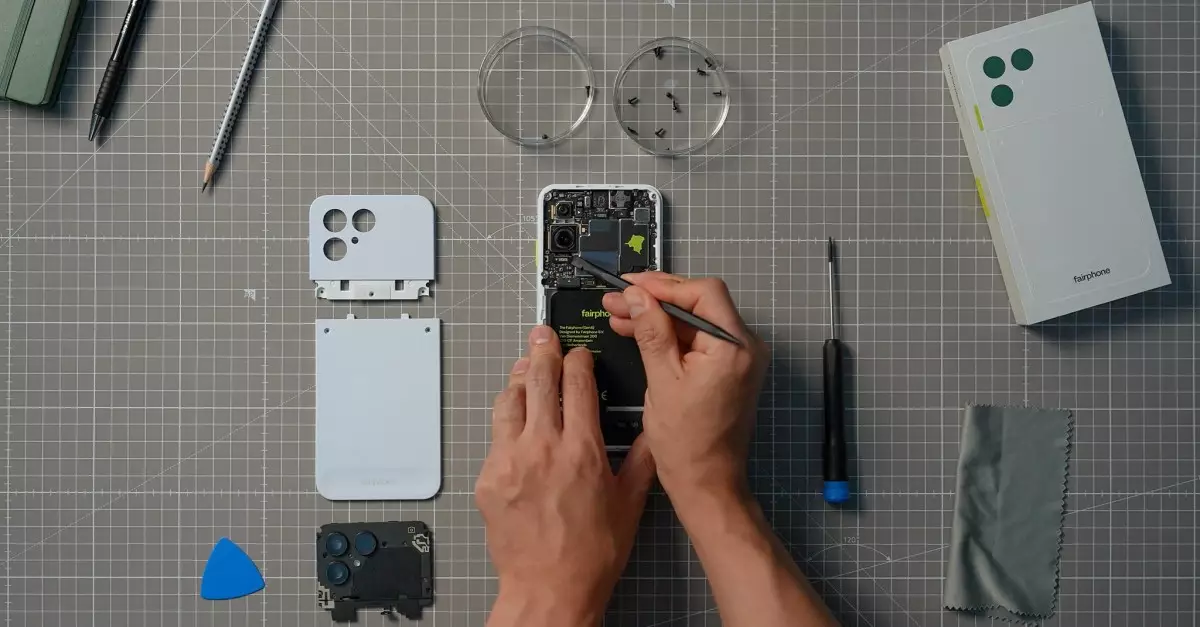The advent of the Fairphone 6 marks a noteworthy deviation from the typical trajectory of modern smartphones, which often prioritize sleekness and compactness at the expense of repairability and longevity. Unlike many devices that are almost impossible to repair without specialized tools, the Fairphone 6 exemplifies a deliberate shift towards modularity and sustainability. Its design team has managed to craft a device that, while smaller and more refined than previous editions, retains an impressive level of repairability, a feat that underscores a fundamental rethink of what a smartphone can be. This commitment to repair-friendly architecture challenges industry norms and invites consumers to consider their devices as long-term investments rather than disposable commodities.
What stands out most is the phone’s ability to balance compact form factor with user-friendly repair features. The reliance on just a single T5 Torx screwdriver for the majority of repairs exemplifies this approach. Such simplicity democratizes repair efforts, empowering users to maintain their devices independently and reducing e-waste—a critical issue in our environmentally strained world. The move away from tool-free battery replacements does not undermine this philosophy but instead emphasizes the importance of precise, durable construction. The design team’s decision to use screws on a softer, slimmer battery indicates a thoughtful compromise between durability and repairability, reinforcing the message that sustainability does not have to come at the cost of innovation.
Uncompromising Repairability Meets Sustainable Support
One of the most compelling aspects of the Fairphone 6 is its unwavering focus on long-term support. The company’s pledge to provide seven years of Android updates and eight years of security patches reflects a visionary stance on device lifecycle management. Such commitments challenge the prevalent throwaway culture fostered by the tech industry, emphasizing instead responsibility, longevity, and user empowerment. This approach resonates profoundly with environmentally conscious consumers tired of the rapid obsolescence promoted by other manufacturers.
Furthermore, Fairphone’s strategy extends beyond software support. The availability of replacement parts from both Fairphone and iFixit signifies a commitment to ease of repair that is rarely seen in mainstream devices. The modular design, with swappable backplates and accessories, further enhances the device’s lifespan and personalization potential. This modularity not only encourages responsible consumption but also creates a new ecosystem where users can upgrade or customize their phones without replacing the entire device, thus reducing waste and environmental impact.
Despite some compromises in specifications—such as a modest dual rear camera and a less powerful Snapdragon chipset—the Fairphone 6’s emphasis on sustainability and repairability positions it as a beacon of responsible innovation. The inclusion of features like an IP55 rating for dust and water resistance and a vibrant, adaptive display indicates that sustainability doesn’t have to mean sacrificing user experience. Instead, it redefines what users should expect from their devices: durability, repairability, and support.
Redefining Market Expectations and Industry Norms
The Fairphone 6’s exceptional repairability score, achieved for the fifth time running, proves that sustainability and high performance are not mutually exclusive. Its consistent top-tier ratings from iFixit serve as a testament to the company’s unwavering dedication to creating devices that are built to last and designed with repairability at their core. No other manufacturer has consistently reached such high marks, which underscores how rare and transformative this approach truly is within the smartphone industry.
Pricing, while higher in regions like the US, reflects both the premium quality of the device and its mission-driven design philosophy. The availability of preorders, shipping in August, and the option to run privacy-conscious software like Murena’s /e/OS demonstrate a conscious effort to cater to diverse markets while remaining true to core principles of longevity and user control. At its core, the Fairphone 6 exemplifies how technology can be a force for good—challenging industry standards and inspiring a shift toward more responsible consumer electronics.
The Fairphone 6 is much more than a smartphone; it’s a bold statement about the future of tech—one where environmental impact, repairability, and long-term support are prioritized. Its innovative modular design, unwavering software commitments, and industry-leading repair scores serve as a blueprint for manufacturers aspiring to redefine corporate responsibility in consumer electronics. If more companies adopt such principles, we could be looking at a future where sustainable, repairable technology becomes the norm rather than the exception.

